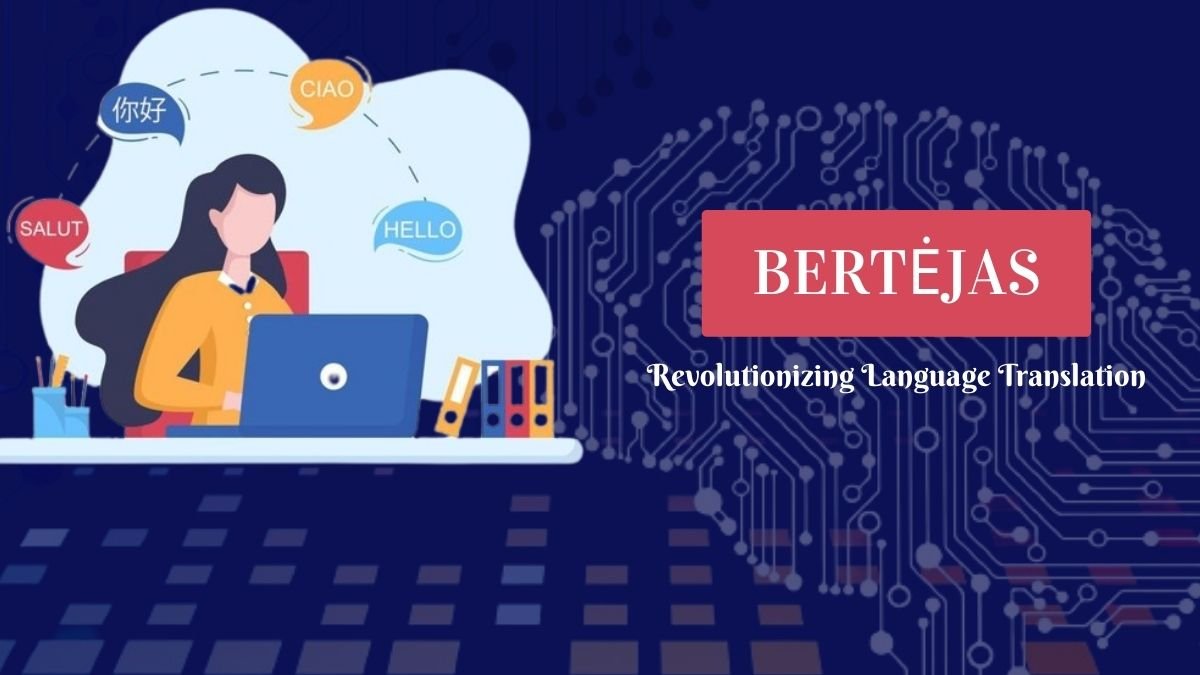In today’s interconnected world, language barriers are gradually becoming a thing of the past, thanks to advancements in translation technology. One such innovation that has gained significant attention is the “bertėjas.” In this article, we delve into what “bertėjas” is, how it works, its benefits, limitations, and much more.
Understanding the Role of a “bertėjas”
A “bertėjas,” often referred to as a translator, is a tool or software designed to translate text or speech from one language to another. Unlike traditional translation methods that rely solely on human expertise, “bertėjas” utilizes artificial intelligence algorithms to interpret and translate content accurately.
Benefits of Using a “bertėjas”
The adoption of “bertėjas” offers several advantages:
- Efficiency: “bertėjas” can translate large volumes of text in a fraction of the time it would take a human translator.
- Cost-effectiveness: Businesses can save on translation costs by using “bertėjas” instead of hiring professional translators.
- Consistency: “bertėjas” ensures consistent translations across multiple documents or languages.
- Accessibility: With “bertėjas,” individuals can access information in their native language, breaking down communication barriers.
How “bertėjas” Works
“bertėjas” operates on sophisticated machine learning algorithms that analyze patterns in language data. It employs techniques such as neural machine translation (NMT) and deep learning to understand the context and nuances of a given text, resulting in more accurate translations.
Popular “bertėjas” Tools
Several “bertėjas” tools have gained prominence in the market, including Google Translate, DeepL, and Microsoft Translator. Each tool has its unique features and capabilities, catering to different user requirements.
Factors to Consider When Choosing a “bertėjas”
When selecting a “bertėjas” tool, it’s essential to consider factors such as language support, accuracy, speed, user interface, and integration with other software systems.
Limitations of “bertėjas”
Despite its advancements, “bertėjas” still faces certain limitations, such as:
- Complexity: Translating highly technical or culturally nuanced content accurately remains a challenge for “bertėjas.”
- Contextual Understanding: “bertėjas” may struggle to grasp the context of a conversation or text, leading to inaccuracies in translation.
- Language Pairing: Some language combinations may yield less accurate translations compared to others due to limited training data.
Tips for Using “bertėjas” Effectively
To maximize the effectiveness of “bertėjas,” consider the following tips:
- Proofreading: Always review and edit machine-translated content for accuracy and clarity.
- Customization: Some “bertėjas” tools allow users to customize translations based on specific terminology or preferences.
- Feedback Loop: Provide feedback to the “bertėjas” tool to improve its performance over time.
Case Studies: Real-world Applications of “bertėjas”
Several industries, including e-commerce, travel, and healthcare, have successfully implemented “bertėjas” to streamline communication and expand their global reach. Case studies highlighting these applications can provide valuable insights into the practical use of “bertėjas.”
Future Trends in “bertėjas”
The field of “bertėjas” is continually evolving, with advancements in artificial intelligence and natural language processing driving innovation. Future trends may include enhanced language understanding, real-time translation capabilities, and improved accuracy.
Challenges in the Field of “bertėjas”
Despite its potential, “bertėjas” faces several challenges, such as ethical concerns regarding data privacy, bias in translations, and maintaining linguistic diversity.
Ethical Considerations in Using “bertėjas”
As with any technology, the ethical use of “bertėjas” is paramount. Users must be mindful of potential biases in translations, respect intellectual property rights, and prioritize data privacy and security.
Conclusion
In conclusion, “bertėjas” represents a significant advancement in language translation technology, offering numerous benefits in terms of efficiency, accessibility, and cost-effectiveness. While it has its limitations and challenges, the continued development and responsible use of “bertėjas” hold promise for bridging linguistic divides and fostering global communication.
FAQs about “bertėjas”
- Is “bertėjas” as accurate as human translators? “bertėjas” can produce accurate translations for general content, but human translators are still superior in handling complex or culturally nuanced material.
- Are there any privacy concerns with using “bertėjas” tools? Users should be cautious about sharing sensitive or confidential information when using online “bertėjas” tools to ensure data privacy and security.
- Can “bertėjas” translate all languages? While many “bertėjas” tools support a wide range of languages, some less commonly spoken languages may have limited support.
- How can businesses integrate “bertėjas” into their operations? Businesses can integrate “bertėjas” into their workflow by using API-based solutions or integrating translation plugins into their existing software systems.
-
What are the potential risks of overreliance on “bertėjas”? Overreliance on “bertėjas” without human oversight can lead to inaccuracies, misinterpretations, and potential cultural misunderstandings in translations.



